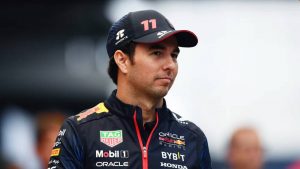MINNEAPOLIS (AP) — Testimony in the trial of a former Minneapolis police officer who shot and killed an unarmed woman after she called 911 to report a possible sexual assault near her home has shined a light on officers’ actions at the scene and raised questions about whether they were trying to protect one of their own.
The incident commander turned her body camera off when talking to Mohamed Noor in the moments after the July 2017 shooting of Justine Ruszczyk Damond, while other officers told him not to say a word, according to prosecutors and court testimony. Many responding officers turned their body cameras on and off at will; one had his camera recording while headed to the scene and shut it off upon arrival.
“These are extremely troublesome things,” said Phil Turner, a defense attorney and former federal prosecutor in Chicago who is not connected to the case. “They’re law enforcement officers and they are supposed to enforce the law equally, whether someone is a sworn law enforcement officer or not.”
Noor, 33, is on trial for murder and manslaughter in the death of Damond, a 40-year-old dual citizen of the U.S. and Australia who was shot while approaching the squad car that Noor and his partner, Officer Matthew Harrity, were in. Defense attorney Peter Wold said in his opening statement that Noor heard a loud bang on the squad car and feared an ambush. But prosecutors say there is no evidence of any threat to justify deadly force.
Noor and Harrity did not turn on their body cameras until after the shooting.
The shooting got instant international attention, led to the forced resignation of the city’s police chief, and led to changes in the department’s policy on body cameras. It also raised questions about a “blue wall of silence” as prosecutors said they had to convene a grand jury to compel officers’ testimony because many refused to provide statements.
Turner found this allegation troubling, saying officers around the U.S. have been covering for each other for years. He pointed to the aftermath of the 1991 police beating of Rodney King in Los Angeles. An independent commission found the code of silence among officers to be “perhaps the greatest single barrier to the effective investigation and adjudication of complaints” about police behavior.
“It’s the same thing, even back then,” he said. “It’s been going on for a long time.”
More recently, Chicago was rocked by claims of a cover-up in the 2014 fatal shooting of 17-year-old Laquan McDonald. Officer Jason Van Dyke was convicted of second-degree murder at a trial in which several officers reluctantly testified against him. A judge later acquitted three officers of staging a cover-up, dismissing as just one perspective the dashcam video of Van Dyke opening fire as McDonald walked away from police and continuing to fire after the teenager crumpled to the ground.
At Noor’s trial, some officers have described arriving to a hectic, confusing situation in which they didn’t initially know Damond had been shot by an officer. Officer Jesse Lopez told Noor: “Just keep to yourself. Keep your mouth shut until you have to say anything to anybody.”
Prosecutors have also raised questions about the noise that Harrity later told investigators precipitated the shooting. Harrity initially told the incident commander that the officers got spooked, prosecutor Patrick Lofton told jurors. But the first mention of a possible slap on the squad car came not from Noor or Harrity but rather from others at the scene who made assumptions about what happened, according to Lofton. The first time Harrity mentioned anything about a loud noise on the squad car was days later, when he spoke with state investigators.
Prosecutors also have told the court that about 20 police officers refused to talk to investigators and met with union officials to discuss withholding information.
Union president Lt. Bob Kroll, who is listed as a possible witness, told The Associated Press he could not comment. But in an interview with the Star Tribune, Kroll dismissed the idea that officers were withholding information.
“That’s an easy sweeping statement to make and without some concrete hard evidence, which they won’t find in this case,” Kroll said.
Minneapolis police spokesman John Elder said there are many checks and balances to hold police officers accountable. The department requires officers to immediately report any police misconduct, including unreasonable force.
“This profession is monitored and the oversight has never been higher,” he said.
Body cameras have been seen as one way to counter the “blue wall.” Minneapolis Police Chief Medaria Arradondo, who was the assistant chief at the time, testified that officers should have left theirs on. Arradondo said that under the department’s body camera policy at the time, officers were expected to hit record when conducting traffic stops or “any sorts of contact where an officer believes that there may be an adversarial situation that develops.”
But officers were given wide discretion. The revised policy requires officers to activate the cameras in most public encounters. Still, it gives officers latitude and says they can temporarily deactivate their cameras to discuss an incident with a co-worker.
Sgt. Shannon Barnette, the incident commander, was asked Tuesday why she turned her camera on and off. She said the department’s policy on cameras “was confusing.”
In court documents, Judge Kathryn Quaintance cautioned prosecutors against making arguments about a general code of silence among officers based on their behavior at the scene. Prosecutors argued in court documents that statements and behaviors of some officers show bias as to why certain evidence was not gathered or kept.
“The jury should question the credibility of any officer’s testimony if he or she demonstrates an unwillingness to give full or truthful testimony because of a bias toward police,” prosecutors wrote.
___
Associated Press writer Jeff Baenen contributed to this report.
___
Follow Amy Forliti on Twitter: http://www.twitter.com/amyforliti
___
Check out the AP’s complete coverage of Mohamed Noor’s trial.










